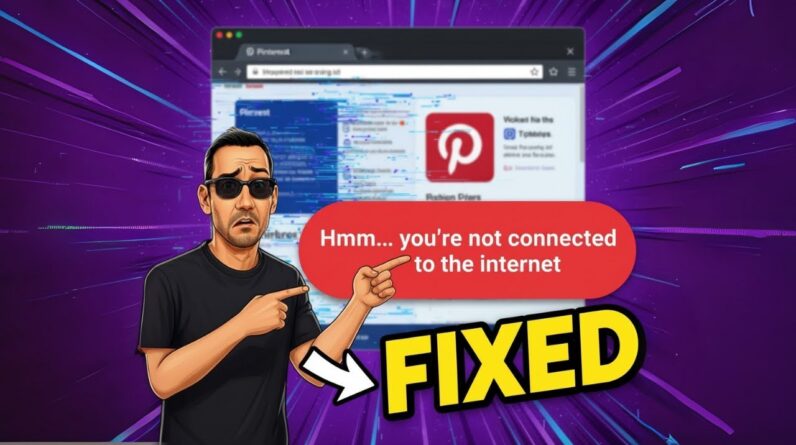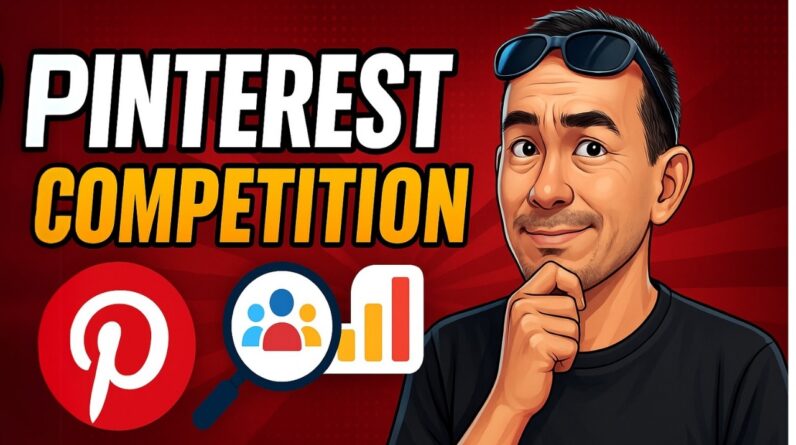
If you’ve ever wondered about the effectiveness of incorporating influencers into your video marketing strategy, you’re not alone. Influencer marketing has become a popular approach for brands to connect with their target audience and build brand awareness. From product reviews to unboxing videos, influencers have the power to captivate and engage their followers, making them potential allies in your video marketing endeavors. But before jumping on the influencer bandwagon, it’s crucial to consider the pros and cons and weigh the impact it could have on your overall marketing goals.
Benefits of using influencers in video marketing
Increased reach and exposure
By partnering with influencers, you can tap into their existing audience and expand your brand’s reach. Influencers have a dedicated following that trusts their recommendations and values their opinions. With their help, you can expose your video content to a larger audience and increase your brand’s visibility.
Targeted audience
Influencers have a specific niche or topic they specialize in, which means they have a targeted audience that aligns with your brand’s target demographic. When you collaborate with the right influencer, you can ensure that your video content reaches the people who are most likely to be interested in your products or services. This targeted approach maximizes the chances of your video marketing efforts translating into actual conversions.
Authenticity and credibility
Influencers have built their reputation on being authentic and connecting with their audience on a personal level. When they recommend or endorse a brand in a video, it comes across as genuine and trustworthy. This authenticity and credibility can have a significant impact on your brand’s image and reputation, as consumers are more likely to trust a recommendation from someone they admire and respect.
Creative content creation
Influencers are content creators themselves, so they bring a creative touch to your video marketing campaigns. They have a deep understanding of their audience’s preferences and can tailor the content to resonate with them. By collaborating with influencers, you can benefit from their creativity and unique storytelling abilities, ensuring that your video content is engaging, entertaining, and effective.
Increased engagement and conversions
Influencers have a powerful influence over their audience, and when they promote your brand through video content, it can lead to increased engagement and conversions. Their followers are more likely to engage with the video, leave comments, and share it with their own networks. This increased engagement can ultimately translate into more conversions for your brand, whether it’s in the form of sales, leads, or website traffic.
Factors to consider when using influencers in video marketing
Relevance to your brand
When choosing influencers for your video marketing campaigns, it’s crucial to consider their relevance to your brand. Look for influencers whose values, niche, and content align with your brand’s identity and target audience. This alignment ensures that the partnership feels natural and authentic, and that the influencer’s audience will resonate with your brand.
Audience demographics
Understanding the influencer’s audience demographics is crucial in determining if they are a good fit for your video marketing strategy. Consider factors such as age, location, gender, and interests of their followers. Ensure that there is an overlap between the influencer’s audience and your target demographic to maximize the effectiveness of your video marketing campaign.
Influencer’s reputation and authenticity
Before partnering with an influencer, it’s essential to assess their reputation and authenticity. Look for influencers who have a track record of maintaining strong relationships with their audience and have built credibility in their niche. Avoid influencers who have been associated with controversies or negative publicity, as this may reflect poorly on your brand.
Cost and budget
Budget is an important factor to consider when working with influencers. Different influencers have different rates, depending on factors such as their follower count, engagement rate, and level of influence. It’s important to set a budget for your video marketing campaign and find influencers who align with your budget. Remember that working with smaller, micro-influencers can often be more cost-effective and can still yield significant results.
Long-term partnership potential
Consider whether the influencer is someone you can potentially collaborate with in the long term. Building a strong relationship with an influencer can lead to a series of successful video marketing campaigns and ongoing brand promotion. Look for influencers who are open to building long-term partnerships and who share your brand’s values and vision.
Steps to effectively use influencers in video marketing
Identify your goals and target audience
Before reaching out to influencers, it’s important to identify your goals and understand your target audience. Determine what you want to achieve with your video marketing campaign, whether it’s increasing brand awareness, driving sales, or promoting a new product. Understanding your target audience’s demographics and interests will help you find influencers that resonate with them.
Research and find relevant influencers
Conduct thorough research to find influencers who are the right fit for your brand. Look for influencers who align with your brand values and have a strong presence in your industry or niche. Utilize tools such as social media analytics platforms and influencer marketing platforms to identify influencers with high engagement rates and a genuine connection with their audience.
Evaluate influencers based on metrics and audience engagement
When evaluating influencers, consider metrics such as follower count, engagement rate, and audience demographics. Look for influencers who have a high engagement rate, as this indicates a more active and involved audience. Additionally, consider the quality of their content and the level of interaction they have with their followers in the comments section.
Collaborate and define the partnership terms
Once you have identified the influencers you want to work with, reach out to them and propose a collaboration. Clearly define the terms of the partnership, including deliverables, timeline, compensation, and any exclusivity agreements. Ensure that both parties are clear on their responsibilities and expectations to avoid any misunderstandings or disagreements.
Create compelling video content
Work closely with the influencer to create compelling video content that aligns with your brand’s message and resonates with their audience. Tap into their creativity and expertise to develop unique and engaging video concepts. Collaborate on the script, storyboard, and overall vision for the videos to ensure that they are authentic to both your brand and the influencer’s personal style.
Promote and distribute videos through influencer’s channels
Once the videos are created, work with the influencer to promote and distribute them through their channels. This could include sharing the videos on their social media profiles, embedding them on their website, or featuring them in their newsletters. Leverage the influencer’s existing audience and reach to maximize the exposure of your video content.
Measure and analyze the campaign’s success
After the video marketing campaign is executed, it’s important to measure and analyze its success. Track key performance indicators such as views, engagement rate, click-through rate, and conversions. Compare these metrics to your initial goals to determine the campaign’s effectiveness. Use this data to optimize future campaigns and make data-driven decisions.
Types of influencers to consider in video marketing
Micro-influencers
Micro-influencers have a smaller following, typically ranging from a few thousand to around 100,000 followers. They have a highly engaged audience, and their recommendations carry a lot of weight. Micro-influencers are often perceived as more authentic and relatable, making them an excellent choice for video marketing campaigns targeting niche markets.
Macro-influencers
Macro-influencers have a larger following, usually ranging from 100,000 to millions of followers. They have established themselves as experts in their field and have a significant influence over their audience. Collaborating with macro-influencers can give your video marketing campaign a broader reach and exposure to a larger audience.
Celebrity influencers
Celebrity influencers are well-known personalities, such as actors, musicians, or athletes. They have massive followings and can drive significant attention to your video marketing campaigns. Collaborating with celebrity influencers can provide instant brand recognition and exposure, but it’s important to ensure that they align with your brand and target audience.
Brand ambassadors
Brand ambassadors are influencers who have an ongoing partnership with a brand, promoting their products or services consistently. They have a deep understanding of the brand and its values, and their audience trusts their recommendations. Collaborating with brand ambassadors for your video marketing campaigns can create a long-term relationship that fosters brand loyalty and advocacy.
Case studies on successful influencer video marketing campaigns
Nike’s collaboration with Cristiano Ronaldo
Nike partnered with world-renowned soccer player Cristiano Ronaldo to create compelling video content. The campaign showcased Ronaldo’s dedication to his craft, highlighting his training regimen and his connection with Nike’s products. By leveraging Ronaldo’s massive following and influence, Nike was able to create a video marketing campaign that resonated with soccer fans worldwide, leading to increased engagement and brand loyalty.
Dollar Shave Club partnership with male grooming influencers
Dollar Shave Club, a subscription-based shaving product company, collaborated with male grooming influencers to create educational and entertaining video content. The influencers shared their personal grooming routines and reviewed Dollar Shave Club products. This partnership helped Dollar Shave Club tap into their target audience and establish credibility in the male grooming industry, resulting in increased brand awareness and customer acquisition.
Sephora’s influencer-generated makeup tutorials
Sephora, a beauty retailer, collaborated with beauty influencers to create video tutorials showcasing their products. The influencers demonstrated how to achieve different makeup looks using Sephora’s cosmetics, providing valuable tips and tricks. This partnership allowed Sephora to reach a wider audience and position themselves as a go-to destination for beauty inspiration and product recommendations.
Common challenges and pitfalls of using influencers in video marketing
Influencer fraud and fake followers
One of the challenges of working with influencers is the presence of fraud and fake followers. Some influencers may artificially inflate their follower count or engagement rate, misleading brands about the true reach and impact of their content. To mitigate this risk, it’s important to thoroughly research and vet influencers before partnering with them and utilize tools that can assess the authenticity of their audience.
Lack of control over the message
When working with influencers, brands relinquish some control over the message and content. Influencers have their own style and voice, and they may have different creative preferences. While this can lead to unique and authentic content, it’s important for brands to provide clear guidelines and communicate their brand message effectively to ensure that the video aligns with their vision.
Difficulty in measuring ROI
Measuring the return on investment (ROI) of influencer video marketing campaigns can be challenging. Unlike other forms of digital advertising, where results can be easily tracked, influencer marketing often relies on softer metrics such as engagement and brand sentiment. To overcome this challenge, it’s important to set clear objectives and track relevant metrics that align with your goals.
Negative public sentiment towards certain influencers
Influencers are not immune to controversies or negative public sentiment. Brands partnering with influencers need to be aware of the influencers’ digital footprint and reputation to avoid any association with negative events or scandals. Thoroughly vetting influencers and staying up to date with their online presence can help mitigate this risk.
Legal and ethical considerations in influencer video marketing
Disclosure and transparency in sponsored content
It is essential for influencers to disclose when their video content is sponsored or in collaboration with a brand. This disclosure ensures transparency and compliance with advertising regulations and guidelines. Brands should work closely with influencers to ensure that sponsored content is clearly labeled as such, whether through explicit mentions or the use of appropriate hashtags.
Avoiding false endorsements and deceptive practices
Influencers should only promote products or services that they genuinely believe in and have personally experienced. Brands should work with influencers who prioritize ethical collaborations and avoid engaging in deceptive practices, such as endorsing products they have not used or making false claims about the benefits of a product.
Complying with advertising regulations and guidelines
Brands and influencers should be familiar with and comply with advertising regulations and guidelines set by relevant authorities, such as the Federal Trade Commission (FTC). These guidelines outline the requirements for disclosing sponsored content and ensuring transparency in influencer marketing. Staying informed and up to date with these regulations is crucial to avoid legal issues and maintain ethical practices.
Alternatives to influencer video marketing
User-generated content campaigns
User-generated content campaigns involve encouraging customers or fans to create and share their own videos featuring the brand’s products or services. This approach leverages the power of user advocacy and creates a sense of community. By incentivizing users to create video content, brands can generate authentic and engaging videos that resonate with their audience.
Internal brand storytelling videos
Instead of collaborating with external influencers, brands can create their own video content featuring employees or brand ambassadors. These videos focus on the brand’s story, values, and mission. This approach allows brands to maintain complete control over the messaging and ensure that the videos align with their brand image.
Partnerships with industry influencers instead of individual influencers
Instead of working with individual influencers, brands can partner with industry influencers, such as industry experts or thought leaders, to create video content. These influencers have built their reputation on their expertise and can provide valuable insights and perspective on the industry. Collaborating with industry influencers can position the brand as a trusted authority and attract a highly targeted audience.
Best practices for a successful influencer video marketing strategy
Set clear campaign objectives
Before starting an influencer video marketing campaign, define clear objectives and key performance indicators (KPIs). Identify what you want to achieve with the campaign, whether it’s increased brand awareness, lead generation, or conversions. Setting clear goals will help you measure the success of the campaign and make data-driven decisions.
Establish a strong partnership and communication with influencers
Building a strong partnership and maintaining open communication with influencers is crucial for a successful video marketing strategy. Clearly communicate your brand’s expectations, guidelines, and vision for the campaign. Foster a collaborative environment where both parties can provide input and feedback to create the best possible video content.
Ensure video content aligns with the influencer’s style and audience
Collaborate with influencers to develop video content that aligns with their style, tone, and audience preferences. Consider their expertise and creative input to create content that resonates with their followers. By tailoring the content to the influencer’s style and audience, you can ensure maximum engagement and effectiveness.
Track and measure key performance indicators
Throughout the campaign, track and measure key performance indicators (KPIs) to assess its effectiveness. Monitor metrics such as views, engagement rate, conversions, and audience sentiment. Use analytics tools and platforms to gather data and make data-driven decisions for future campaigns.
Engage with your target audience through comments and interactions
Encourage engagement and foster a community around your video content by responding to comments, addressing questions, and engaging with your target audience. Show appreciation for their support and feedback, and use this opportunity to learn more about their preferences and interests. By actively engaging with your audience, you can build stronger relationships and foster brand loyalty.
Conclusion
Influencer video marketing can be a highly effective strategy for brands to expand their reach, engage their target audience, and drive conversions. By leveraging the influence and credibility of influencers, brands can tap into existing communities and create authentic and engaging video content. However, it is crucial to carefully consider factors such as relevance, audience demographics, and authenticity when selecting influencers. With a well-planned strategy, clear communication, and a focus on building meaningful partnerships, brands can leverage influencer video marketing to achieve their marketing goals and drive business growth.






